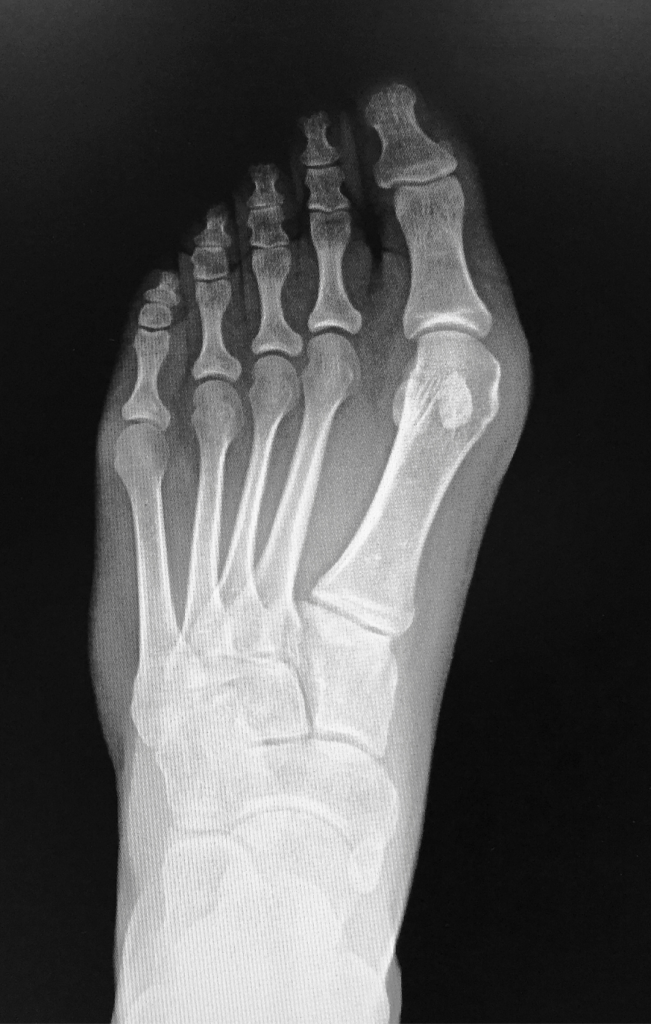Hallux valgus
Diagnosis & THerapy
ÜBERSICHT
What is a hallux valgus?
Hallux valgus is one of the most common foot deformities. The full picture describes a skewed position of the big toe outwards, which is why the joint protrudes clearly to the side.
How does hallux valgus develop?
In most cases, there is a family predisposition (= predisposition), so that the mother or aunt also often suffer from hallux valgus. A long history of splayfoot favors the formation of hallux valgus, as does the constant wearing of pointed shoes.
What are the symptoms?
The obvious deformity is already a cosmetic problem for many people. In most cases, the discomfort is exacerbated by a pressure point on the inside of the joint when wearing narrow shoes. This is referred to as “shoe conflict”. The constant pressure causes irritation of the bursa directly above the metatarsophalangeal joint, which is partly responsible for the chronic pain.
How is the diagnosis made?
The clinical examination can determine the malposition and rule out other pathologies. The pressure pain on the inside of the metatarsophalangeal joint and the increasing level of discomfort are key factors in deciding on further treatment. Finally, the actual extent of the deformity and the location of the necessary correction can be determined by taking an X-ray while standing.

How is hallux valgus treated?
The deformity can no longer be corrected conservatively. However, in the early stages, mild discomfort can be improved by softening the painful area, by providing insoles for an existing splayfoot or by inserting a silicone spacer between the big toe and second toe.
If the level of suffering increases due to the shoe conflict or the worsening cosmetically unpleasant deformity, the only remaining option is surgical correction of the deformity. There are countless surgical methods for correcting hallux valgus. Ultimately, the localization and extent of the deformity determine which method can be performed. The angle between the 1st and 2nd metatarsal bone (= intermetatarsal angle) and the angle between the 1st metatarsal bone and the proximal phalanx (= hallux valgus angle) must be measured before surgery. The relative lengthening or shortening of the metatarsophalangeal joint to the metatarsophalangeal joint of the second toe and the width of the first metatarsal bone are also decisive in determining which form of correction can be selected.

OP after Chevron
Chevron osteotomy is one of the most frequently performed corrective procedures, as it is quite simple to perform, has good corrective potential and its excellent results have been well researched and reproducible over many years. The joint capsule is opened with an approx. 5 cm long incision on the inside of the metatarsophalangeal joint, excess bone is removed and the metatarsal bone is cut in a V-shape (=osteotomy). The bone parts are then moved against each other and the new position is fixed with a wire or screw.
OP to Austin
In the Austin method, the chevron osteotomy is extended by separating the joint capsule on the outside of the joint capsule (= capsule release) via a small additional skin incision. The intertarsal angle (=the top) should not exceed 15-17 degrees for the Cheveon correction, depending on the width of the 1st metatarsal bone.
